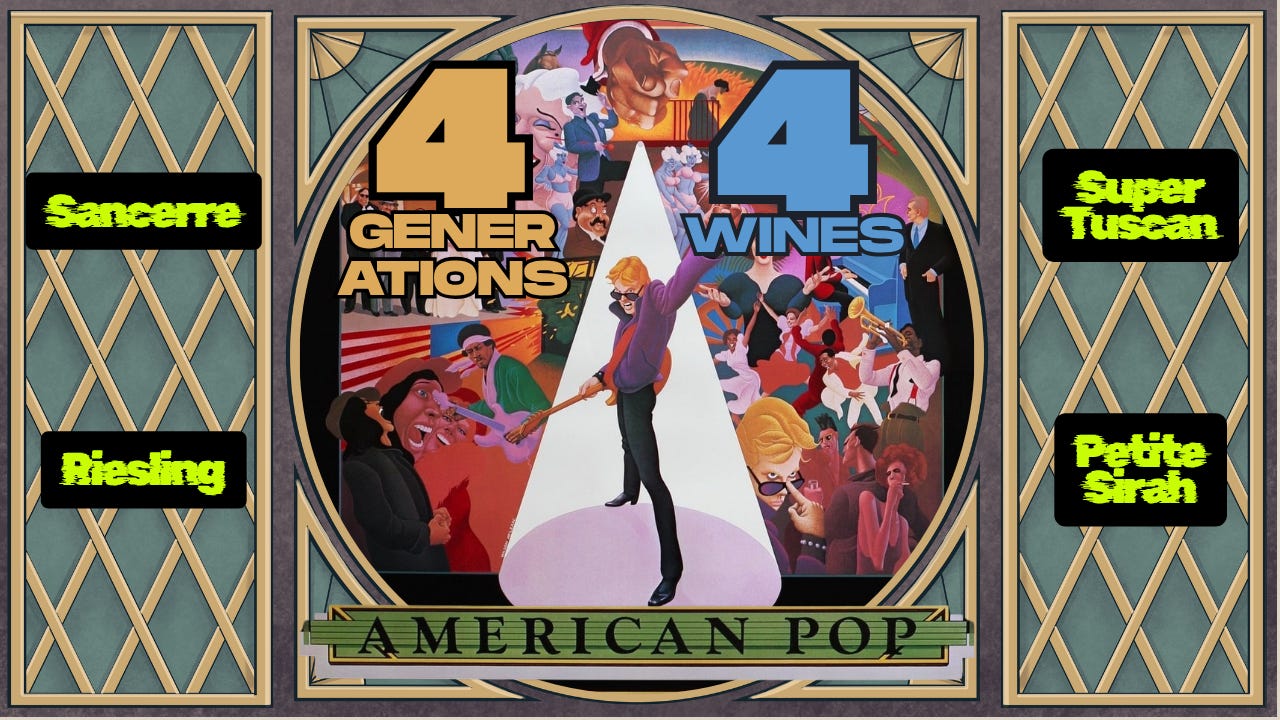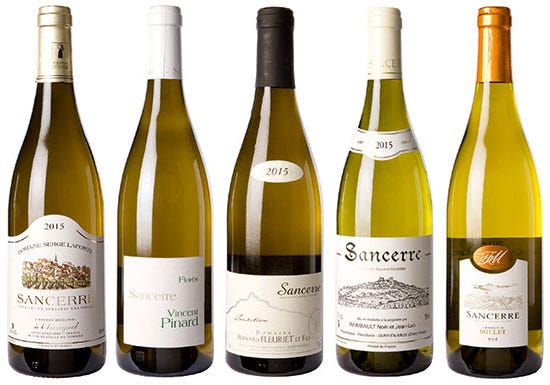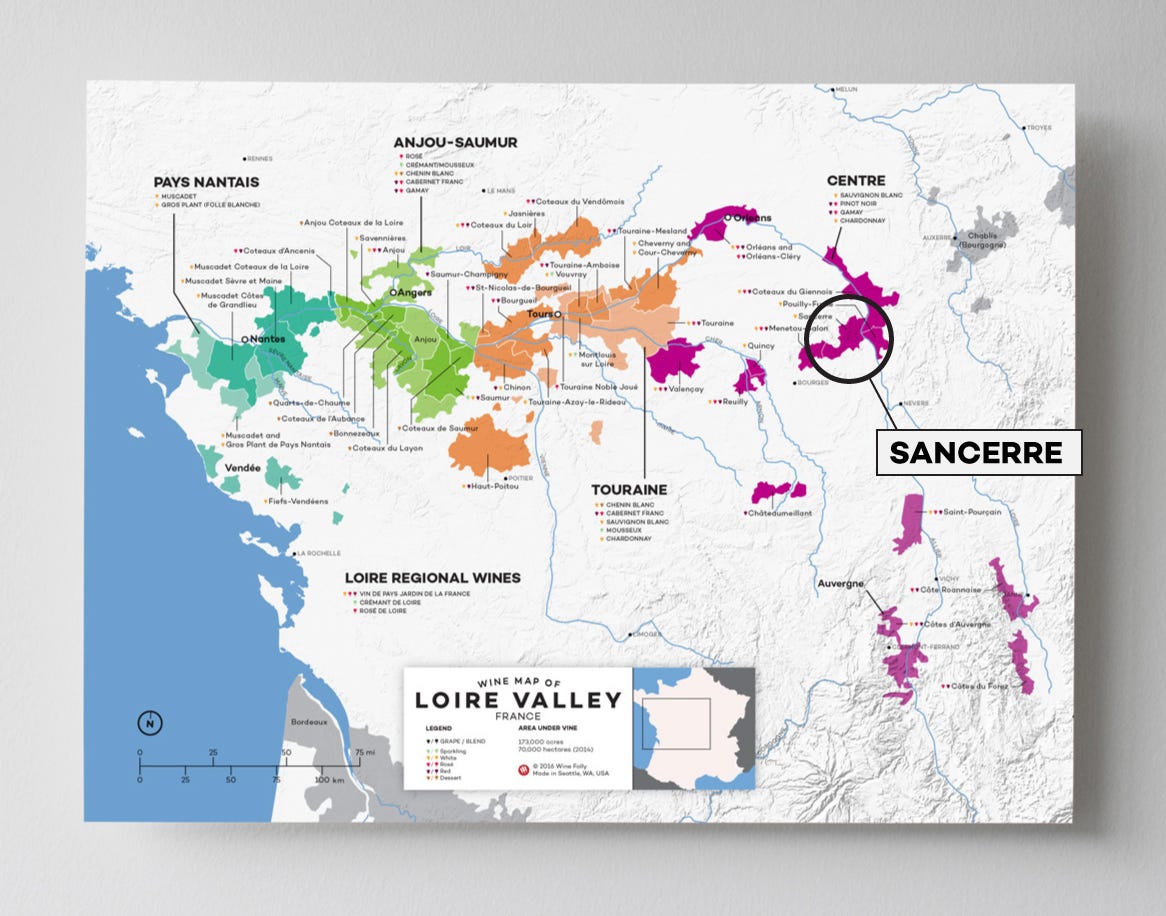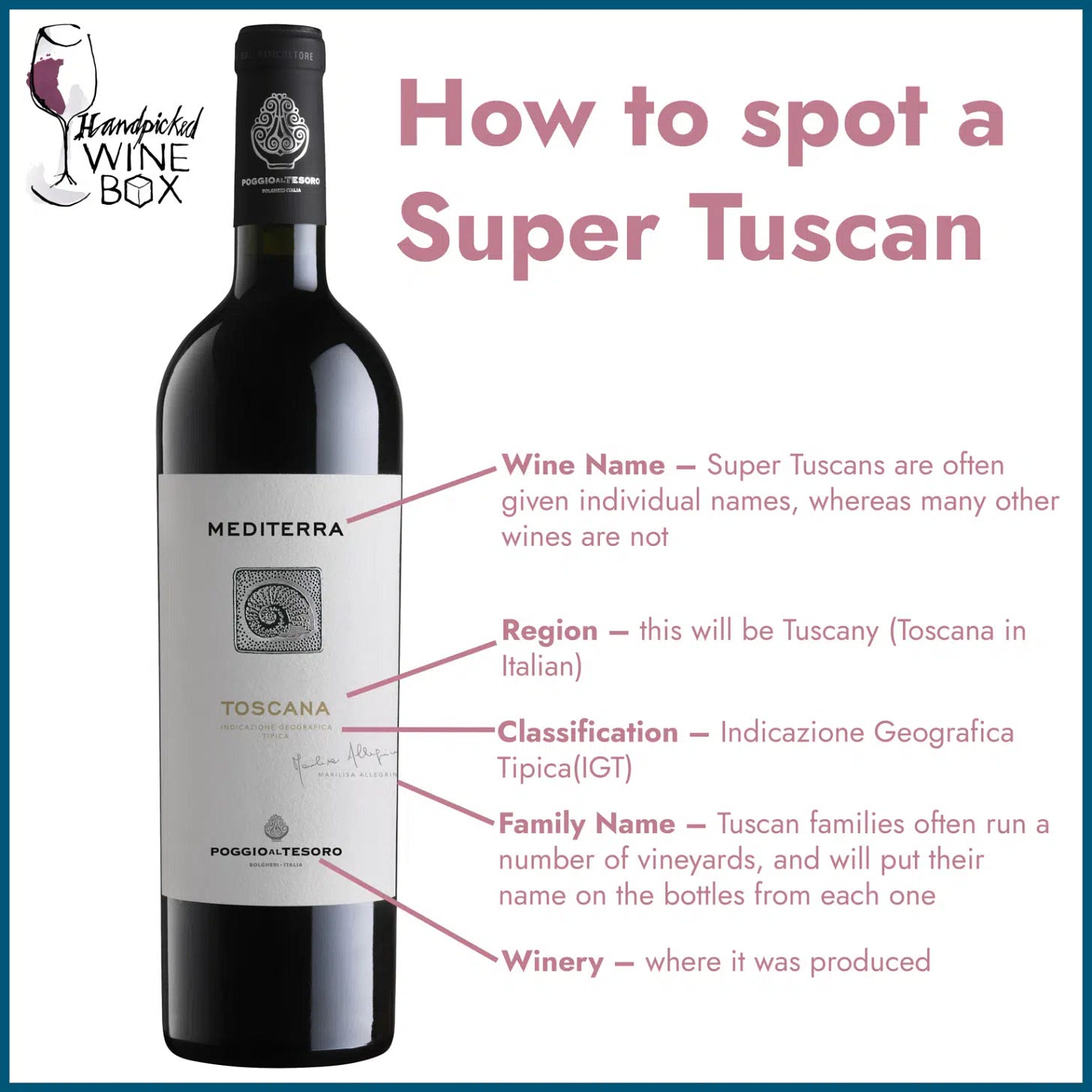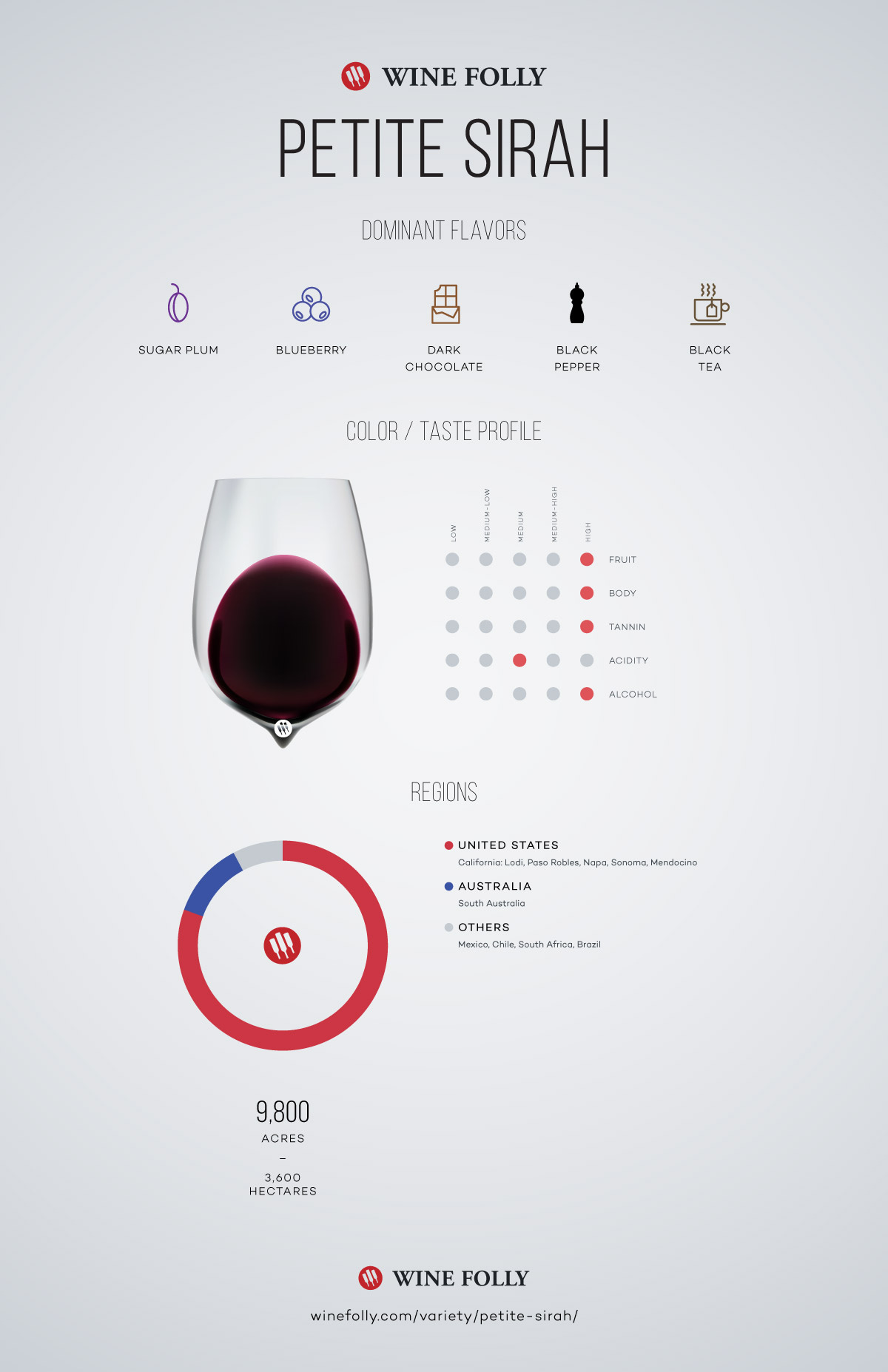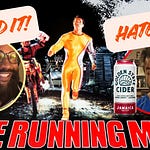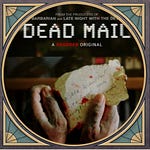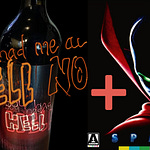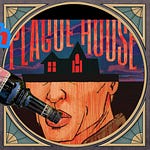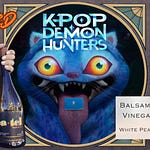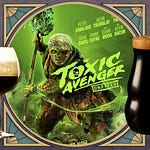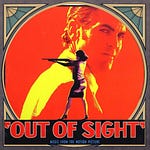Two weeks ago, we attended ’s microcinema screening that takes place every Sunday at 1pm in downtown Los Angeles inside an indie art gallery (and right next to a farmer’s market! Wheee!)
And this coming Sunday, October 5th, is FILMSTACK DAY IN LA!!! Come join us first at Filmjourn Microcinema than later at a local bar.
I’ve long been a fan of Ralph Bakshi’s WIZARDS and LORD OF THE RINGS animated features, but had never seen his numerous othr works, including the film we saw that day: AMERICAN POP from 1981.
While the film had been a minor box office success, music clearance issues kept it from being released on home video until the late 90’s, so no wonder if most of us hadn’t seen it or even heard of it! The film chronicles 4 Generations of a single immigrant family as they weave in and out of American Pop Music culture, from 1905 straight through to the early 80’s. The title pulls double duty as “Pop” music from every era is woven throughout, and “Pop” also refers to the fathers and sons we follow - the “pops”.
The animation is done entirely via Rotoscope and watercolor, a style that falls heavily into the “Uncanny Valley”. It used to scare the crap out of me as a kid, though I’ve come to adore it as an adult. If you haven’t seen anything Rotoscoped in a while, or have literally never seen it before, give the film 10-15 minutes; let your brain adjust. It’s an incredible effect but it’s very off-putting until you get used to it.
Here’ s Bakshi breaking down how Rotoscoping works:
4 Generations + 4 Wines = Pairing Flight
And we did something unique for this one: since the film it followed 4 distinct generations in 4 distinct “Acts”: we chose a different type of wine for each Act/Generation, each meant to segue into the other as a Pairing Flight! And we chose these wines in real time on the podcast, no deciding ahead of time!
Full flight is written up after the Trivia break!
Wine Trivia Question of the Week
WHY did Paul Giamatti’s character in SIDEWAYS hate fucking Merlot?
Was it because:
A) Merlot sucks?
B) Merlot had been overplanted in California leading to a glut of poor quality Merlot within the California appelation but in reality Merlot still comprised some of the best wines in the world including Right Bank Bordeauxs such as Pomerols and St. Emilions as well as being a significant part of most Super Tuscans coming out of Tuscany?
C) His ex-wife drank and loved Merlot?
D) Merlot really, really sucks.
Answer at the very end!
Generation 1 - Zalmie
The film begins in Emperial Russia where a Rabbi father is killed by the Cossacks during a raid, forcing his wife and young son to flee to the US. The son, Zamie Belinsky or “Lipp” is recruited by Louie, a performer at a burlesque house, to hand out chorus slips (sheets of paper with song chorus lyrics, used to enable audience members to sing along). When Zalmie’s mother dies in the Triangle Shirtwaist Factory fire, he begins working with Louie full-time at a small theatre. When World War I strikes, Zalmie travels the globe performing for the troops but sustains a wound to his throat during a German air raid, which ends his singing career.
When Zalmie returns to New York, he briefly continues performing as a clown, and falls for a stripper named Bella; he vows to make her a famous singer and gets involved with mobsters in order to do so. When Zalmie knocks her up, he uses money from mob boss Nicky Palumbo to pay for their wedding. Bella achieves modest success, but is soon killed after opening a package containing a bomb intended for Zalmie.
Wine 1 - Sancerre
Sancerre is the most famous region in France for Sauvignon Blanc. Unlike the fresher, crisper styles of New Zeland Savvy B, Sancerre tends to be more mineral, flinty, and oak aged for more richness and depth. Dallas wanted a wine with this grounded “earthiness” but still familiar Savvy B acidity and tart fruitiness. The thrown you into the deep end of tragedy and struggle from its opening moments, the Rotoscoping keeping you off balance, so you’ll want this mix of weight and familiarity to help ground yourself until you’vee adjusted. And a crisp white wine to keep things light, even as the movie goes deep and dark.
For a likely more affordable, but similar styles of French Savvy B, also look for Pouilly-Fume, Menetou-Salon, Reuilly, or Quincy.
Generation 2 - Benny
Their son, Benny, who is already an introverted child, focuses all of his efforts into becoming a talented jazz pianist. Benny marries Palumbo’s daughter at Zalmie’s request and enlists to fight in World War II, despite pleas from his father. Benny is killed in Nazi Germany when he stops to play on an abandoned piano and is caught off-guard by a Nazi soldier; Benny begins to play Lili Marleen and the Nazi closes his eyes in bliss, but when the song ends, the Nazi pauses only to thank Benny before riddling him and the piano with gunfire.
Wine 2 - Riesling (Trocken or GG)
Benny moves through life with an airiness, a feather-lightness yet plays immaculately complex jazz piano as though it were second nature. He doesn’t even conisder playing such music “work”, just “playing”. Looking for meaning, he enlists and is slaughtered while trying to share this gift.
Riesling is one of the most complex white wines in the world, in terms of flavor profile and aromatics. Citrus, tart berries, minerality, with a tell-tale petroleum element, and it can age into gorgeously honeyed older wines, much as Benny would have done, had he aged. I wanted to match the lightness and the complexity of Benny’s playing, and the sadness of his end, so of course I had to look to Germany for a “sad” wine.
Riesling comes in all sweetness levels, but preferably a “Trocken” or 100% “Dry”. Also look for “GG” or “Grosses Gewächs” (Greater Growths) a mark of high quality grapes that must always be Trocken/Dry.
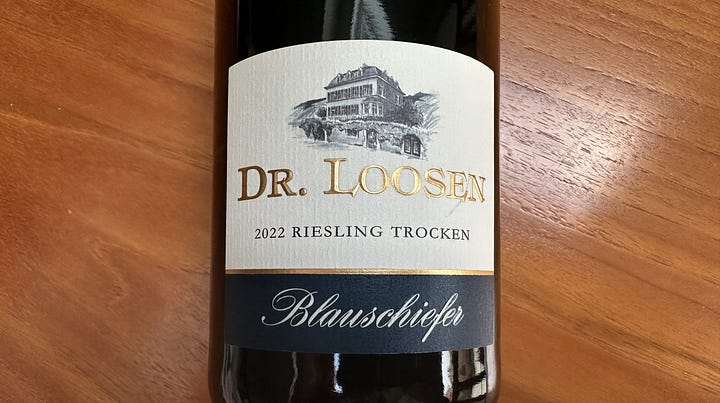
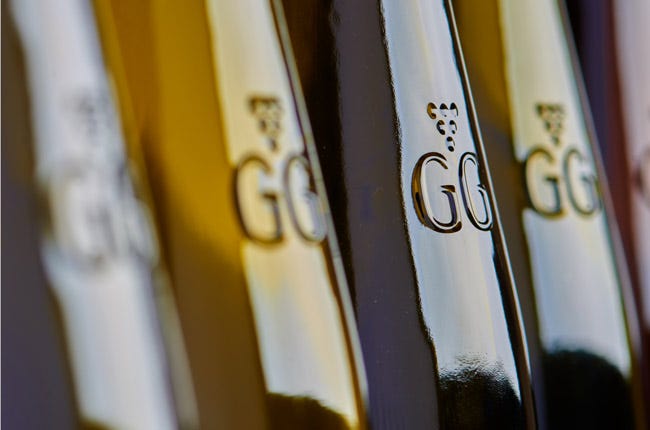
Generation 3 - Tony
Benny’s wife and son, named Tony, now live in a suburban Long Island town. Plainly troubled by the death of his father at such a young agee, a teenage Tony steals his stepfather’s car and drives across the country for four weeks, ending up in Kansas, where he spends the day washing dishes at a diner and spends the night with a waitress.
Continuing on to California, Tony a six-piece rock group invites him to write songs for them after hearing him playing a harmonica under their doorstep. The band becomes successful but slowly starts to decompose because of the heroin addictions of female lead singer Frankie Heart and Tony himself. Tony becomes addicted to drugs after being hospitalized. Frankie and the band’s drummer, Johnny Webb, marry but divorce after two weeks, and Frankie begins an affair with Tony. In Kansas, the band is set to perform after Jimi Hendrix, but Frankie overdoses backstage. Meanwhile, Tony meets a blonde, blue-eyed boy, Little Pete, whom Tony realizes is his son, conceived the night he spent with the waitress many years ago.
Wine 3 - Super Tuscan
Tony’s angry restlessness reflects the musical explosion of the 60’s and 70’s, a confluence of cultures and inspirations and a need to do everything different than what had come before, including free love and heavy drug use, no matter the “rules”, no matter the consequences.
Super Tuscans are Italian wines that lived by the same ethos: by law Italian wine regions could only plant and make wine with indigenous grapes. But winemakers from Tuscany/Toscana found great success with growing French grapes such as Cabeernet Sauvignon, Merlot, Cabernet Franc, and Petite Verdot. Since these broke the rules, however, the wines could not be said to come from Tuscany, but had to be labeled as basic “Country Wines” from “Italy”, which meant they sold for very low prices.
American wine critics fell in love, however, and coined the name “Super Tuscan”, which isn’t a place, so the winemakers were able to label the wines as this once the term was popular. The “Super Tuscan” wines became more popular than most other Italian wines and soon commanded prices higher than the wines that followed the rules. Just like the music scene of this time.
Super Tuscans also tend to be dark, brooding, serious red wines with a lot of weight, tannic grip, and oak-infused flavors. Definitley decant these bad boys, or buy one with at least a few years of age on it already.
Generation 4 - Pete
Tony moves back to New York City accompanied by Little Pete, where he becomes heavily involved with drug dealing. Pete makes a small amount of money busking with an acoustic guitar, but Tony takes any money that Pete earns to buy drugs for himself. One day, Tony and Pete argue over the latter’s guitar, where Pete implies that he knows Tony is his father. After he tells the story of his own father, Tony gives Benny’s harmonica to Pete, then takes Pete’s guitar to pawn it, telling Pete to wait on the city bench they’re at.
The next morning, a man approaches Pete and gives him a small package of drugs to sell and the pawn slip for his guitar and tells Pete that Tony said goodbye to him. After years of selling drugs to rock bands, Pete refuses to sell a certain band any more cocaine unless they are willing to listen to his music. Playing “Night Moves”, his talent stuns both the band and the management and they agree to record and hire him on the spot. Eventually, Pete performs in concert with the band to roaring cheers from the crowd.
Wine 4 - Petite Sirah
Holy shit, a happy ending!
Well, Pete’s story is still ongoing, we end in the middle of it, so that’s probably why it’s happy, but still, with this ****ing movie take what you can get.
And so to end here, happy, celebratory, but jamming out to the excesses and extravagances of the 80’s and its fashions and music, I had to go with a Petite Sirah. This was my gateway wine back in the day: it’s even darker and inkier than a Super Tuscan, BUT it’s also fruitier, jammier, “sweeter” (on the palate), while being smoother with the tannins, heavy yet easy, silky. It’s just plain pleasant.
California grown the majority of the modern world’s Petite Sirah, and a Cali Petite is definitely my recommendation. But you can also find a bit grown in South Africa, and also in Australia under the name “Durif”. Go get yourself that hardy jam in a glass for the grand finale, rock out to some 80’s, and all will be right with the world.
Wine Trivia Answer
C) His ex-wife loved and drank Merlot.
But wait, wasn’t long-winded B the answer?
B is the likely reason why the movie had the massive impact on the Merlot industry that it did. Here’s a character shit-talking Merlot at every turn, but why did the American public decide he was right? When elsewhere in the movie it’s pointed out that he’s biased against Merlot for personal reasons?
Because Merlot had been overplanted in California, and a lot of sub-par wine was being made from it. So when this movie dropped, most drinkers were more than happy to take Miles’ seeming “advice” - don’t drink any fucking Merlot.




